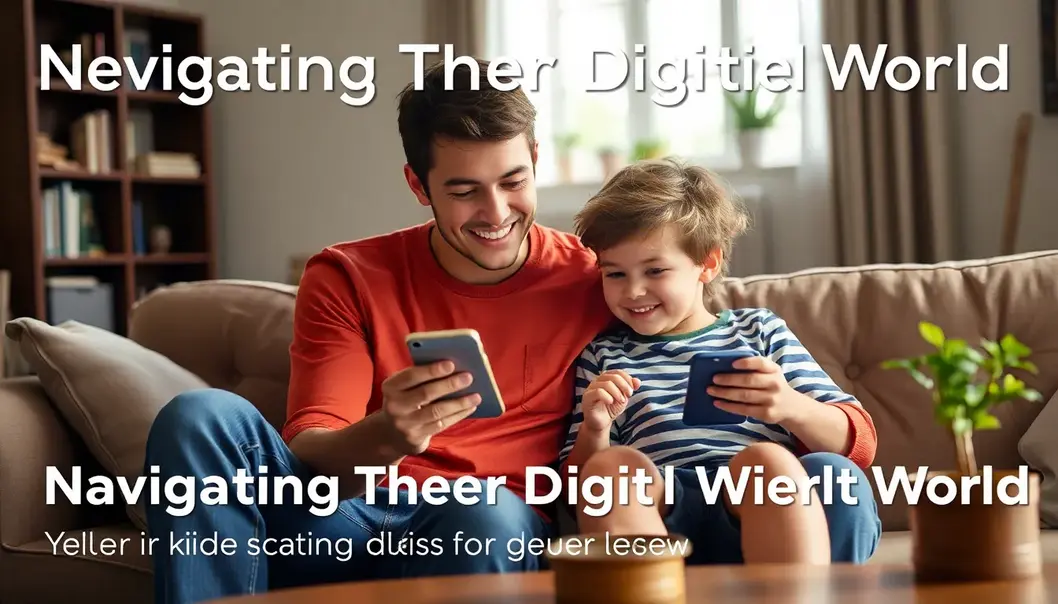Social media is a powerful tool for communication, creativity, and learning. However, it also comes with risks, especially for young minds. As a young adult, you may find yourself in a mentoring role, whether you’re an older sibling, a cousin, or a family friend. Having the ‘social media talk’ with kids today is crucial. It’s about laying down a foundation for safe and positive digital interactions. You want to ensure that while they indulge in all the fun and exciting aspects social media offers, they’re also prepared to handle the challenges that come along. Let’s dive into meaningful ways to engage with kids about social media and equip them for the digital world.
Understanding Their Digital World

In a space where digital interactions are constantly evolving, it’s essential to comprehend how young individuals perceive social media. Kids and teens often view these platforms as essential extensions of their social lives, offering avenues for connection, self-expression, and entertainment. Recognizing what drives these online interactions is crucial for guardians who wish to foster a healthy digital engagement with their children.
Unlike adults who might primarily use social media for networking or news consumption, many young people see it as a space for exploration and experimentation. They find comfort in crafting their own online personas, trying on a variety of identities that may not yet be fully formed in their offline lives. Chatting with friends, sharing memes, and following influencers are just as integral to their daily communication as face-to-face interactions might have been for previous generations.
These platforms can also serve as vital sources of support. Young users often turn to social media communities to find others with shared experiences or challenges, engaging in discussions that help them feel less alone in navigating their unique struggles. Whether it’s a group for budding artists or a forum addressing mental health issues, social media can provide a sense of belonging and validation. This capability of digital communities to offer support is both powerful and influential in how kids navigate their online presence.
Engagement with youth about their social media use should start with understanding. It’s less about policing their usage and more about being curious, asking which platforms they prefer, and why. It’s useful to learn about the latest trends they are enthusiastic about and explore who their influencers are. By showing interest in what captures their attention, adults can bridge the generational gap and enter into these digital dialogues with empathy rather than judgment.
Moreover, young people are often driven by a desire for immediate feedback and affirmation. The instant gratification of likes and comments reinforces their online engagement. Understanding this can help adults advocate for more balanced digital interactions, steering conversations towards mindfulness and critical engagement with the content they both consume and create.
Encouraging teens to reflect on their social media experiences rather than exploit the platforms for self-worth only can foster healthier relationships with technology. When adults position themselves as allies rather than adversaries, they empower kids to navigate their digital worlds with confidence and discernment.
To tap into the broader aspects of this digital interaction, you might find insights in various narratives like soulmates with fur, feathers, and scales, which explores meaningful connections beyond the human sphere. Such an understanding can enrich the broader conversation about empathy and connection in digital realms.
Setting Boundaries and Encouraging Open Dialogue

Guiding kids in navigating their digital landscape entails establishing clear parameters around social media use. Setting boundaries isn’t about limiting freedom; it’s about teaching responsibility. Start with time constraints, ensuring enough room for offline activities. Encourage kids to allocate specific durations for social media, akin to scheduling periods for homework or physical play. This framework instills discipline and helps them avoid the fatigue of endless scrolling.
Equally important is the use of privacy settings on social media platforms. These settings guard against unwarranted intrusions, yet many kids aren’t aware of how to use them effectively. Take time to explore privacy options together, discussing who sees their content and why some information should remain personal. Encourage them to think critically about their digital footprint, reminding them that online actions can linger long-term.
Another crucial boundary involves teaching critical evaluation of content. Kids encounter vast amounts of information daily; developing critical thinking skills enables them to discern quality content. Encourage questioning: Is this information reliable? Who benefits if I believe or share this? Such inquiries promote mindful consumption, mitigating the impact of misleading or harmful narratives.
To bolster these lessons, foster an environment of open dialogue. Encourage children to share their online experiences without fear of judgment or reprimand. Create regular check-ins where they feel safe discussing challenges, exciting discoveries, or confusions they’ve encountered online. Through active listening, parents and guardians can offer guidance, address misconceptions, and learn more about their child’s digital world.
Remember, dialogue is a two-way street. Be open about your own experiences and mistakes with digital platforms. This transparency demystifies the online landscape, showing that even adults navigate similar challenges. It builds trust, reinforcing that they have a reliable ally in their digital journey.
Finally, view boundary setting not as an endpoint, but as part of an ongoing conversation. As platforms evolve, so too should the boundaries and discussions surrounding them. By maintaining a consistent and open dialogue, children will grow up equipped with the skills to use social media thoughtfully and responsibly.
Final words
Communicating about social media with kids effectively prepares them to engage safely, creatively, and positively online. By understanding their perspective and creating open avenues for discussion, you’re setting them up for success in navigating their digital experience with confidence. Remember, a supportive conversation can make a lasting impact.
Start the conversation and empower kids with responsible social media habits. Visit our resource center for more tips and guides.
Learn more: https://www.example.com/resources/talk-to-kids-social-media
About us
Our company provides insightful resources and interactive workshops that help young adults mentor children in understanding technology and responsible digital citizenship. We are dedicated to fostering an environment that promotes safety, creativity, and learning for the next generation in the digital space.

